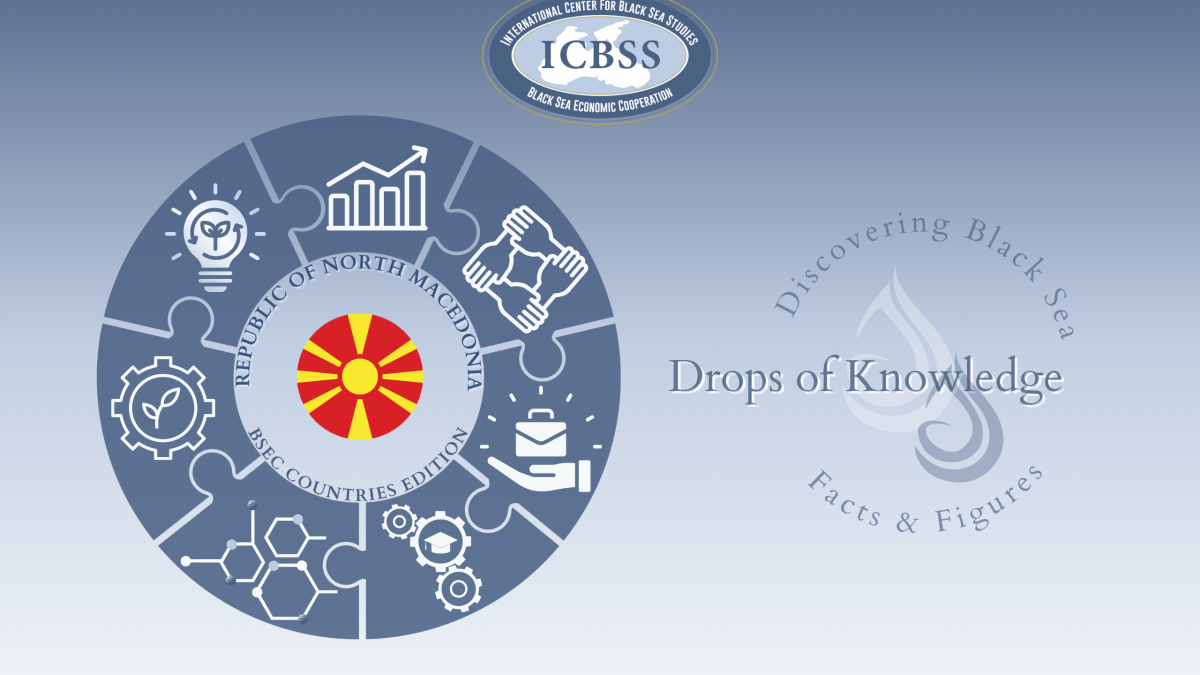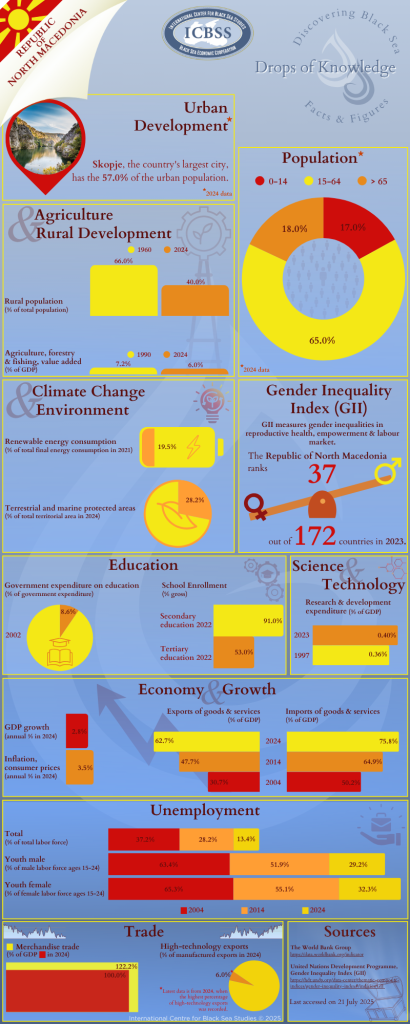
Drops of Knowledge – Discovering Black Sea Facts & Figures
BSEC Countries Edition - Republic of North Macedonia
22 July 2025
The International Centre for Black Sea Studies (ICBSS) is launching the Drops of Knowledge – Discovering Black Sea Facts & Figures “BSEC Countries Edition”.
Thirteen infographics -one for each of the thirteen BSEC Member States- with the aim to provide comprehensive information of key socioeconomic indicators, such as population, unemployment, education, economy, and climate change. The infographics will be published monthly.
The eighth infographic focuses on the Republic of North Macedonia.
HIGHLIGHTS
- Urban Development: 57% of the urban population lives in Skopje, the country’s largest city (2024).
- Agriculture and Rural Development: 40% of the total population lives in rural areas, as of 2024. In 1960, the first year this indicator was recorded, the percentage of the rural population was 66%.
- Population: 65% of the total population is between the ages 15-64 (2024).
- Climate Change and Environment: 19.50% of the total final energy consumption comes from renewable energy sources (2021).
- Gender Inequality Index (GII): The GII measures gender inequalities in three key dimensions: a) reproductive health, b) empowerment, c) and labour market. Reproductive health is measured by maternal mortality ratio and adolescent birth rates; empowerment is measured by the shares of parliamentary seats held and population with at least some secondary education by each gender; and labour market participation is measured by the labour force participation rates for women and men. In 2023, the Republic of North Macedonia ranks 37 out of 172 countries.
- Education: In 2002, the only year for which data is available, government expenditure on education was 8.6%.
- Science and Technology: In 2023, the most recent year for which data is available, gross domestic expenditures on research and development (R&D) are 0.40%. In 1997, the first year in which this indicator was recorded, the percentage was 0.36%.
- Economy and Growth: In 2024, the annual percentage growth rate of GDP is 2.8%, while inflation as measured by the consumer price index is 3.5%. Over the last twenty years (2004-2024), exports of goods and services have increased from 30.7% to 62.7%, while imports have increased from 50.2% to 75.8%.
- Unemployment: Over the last twenty years (2004-2024), unemployment of the total labour force has decreased from 37.2% to 13.4%. Correspondingly, male and female youth unemployment (labour force ages 15-24) decreased from 63.4% to 29.2% and from 65.3% to 32.3%, respectively (modeled ILO estimate).
Sources:
The World Bank Group, https://data.worldbank.org/indicator
United Nations Development Programme, Gender Inequality Index (GII), https://hdr.undp.org/data-center/thematic-composite-indices/gender-inequality-index#/indicies/GII
All last accessed on 21 July 2025.




